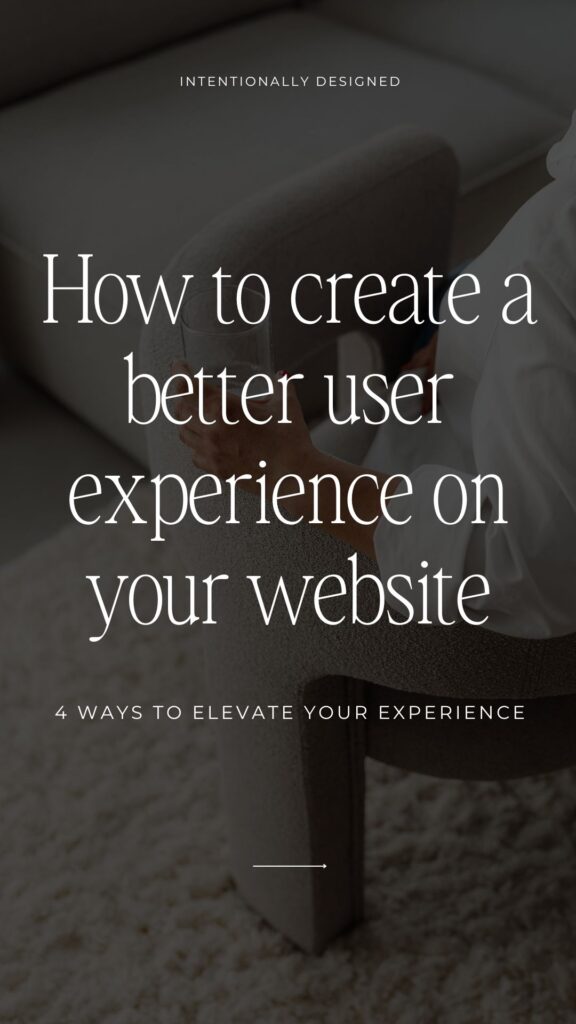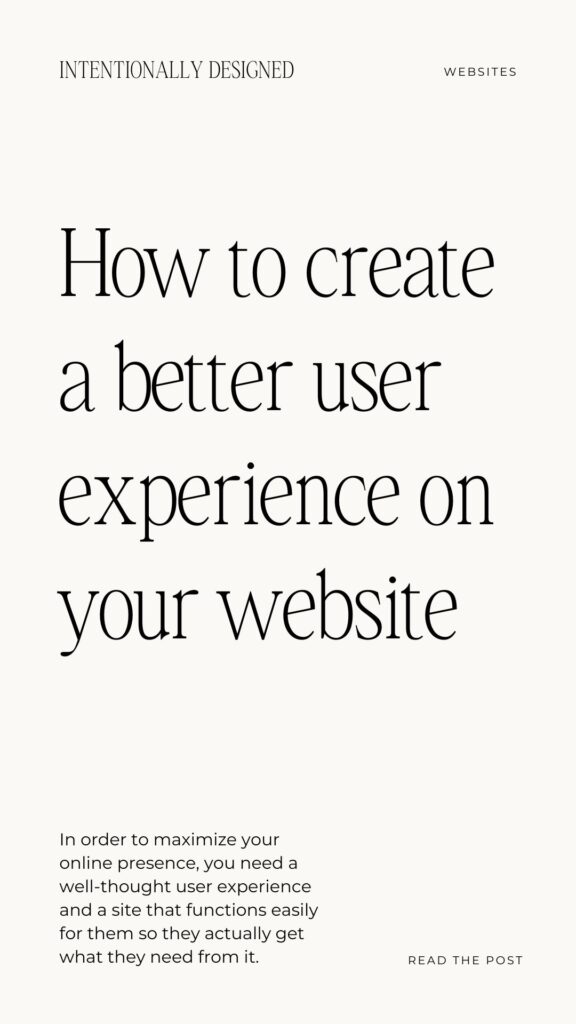The design and visuals of a website are very important, but it’s only part of the equation. In order to have a truly effective and successful website, you need equal parts of design and function. Even if your website is the most beautiful thing on the internet, it loses value if users can’t quickly and effectively find what they’re looking for. That’s where user experience comes in. In order to maximize your online presence, you need a well-thought user experience and a site that functions easily for them so they actually get what they need from it.
What is user experience and why it’s important for your website
Although user experience can apply to many different things, for the purpose of this post we are focusing on how it applies to your website. When it comes to your website, the user experience is how a person feels when interacting with your site. It’s the actual experience that they have as they scroll through pages and navigate through the website.
A good user experience:
- helps users quickly and effectively find what they’re looking for on your site
- encourages visitors to return and suggest your site to others
- has the potential to increase inquiries and sales
Paying attention to the user experience you are providing on your website can help you maximize the impact of your site, making it do even more for your business. Your website is there to do a job, not just look pretty, and creating a good user experience helps it do it’s job. So it’s not something you want to skim over or forget about when building your website.
Understanding your visitors so you can build the experience for them
An important part of creating a good user experience is understanding who will be visiting your website and how to meet them where they are so they get the best experience possible.
On each page of your site, your visitor should have:
- The information they need
- In words they understand
- At the time they need to hear them
- From someone they trust
- With a clear call to action
Types of website visitors and what you want them to do:
Browsers – You want them to understand what you do and who it’s for. Let them know they are in the right place. Send them to your blog or free resources for more information so they start to trust you.
Researchers – You want these visitors to look at your offerings so they convert from researchers to buyers. Give them the info they need to make a decision.
Buyers – These people are ready to buy but you still want them to feel confident in their decision. They need to understand how you will solve their problems.This is when you can give them a demo of your product or encourage them to set up a consult call.
Returning visitors – These are your loyal fans and customers. You want to keep them coming back to your site for more. Give them value and get them on your email list so you can keep connecting with them.
How to map out the behavior flow of your site for the best experience
A behavior flow is where you clearly map out how you expect your website visitors to move through your website. You may think that providing people with every possible option in a navigation bar and letting them choose what to do is the best experience. But it’s not.
As people scroll through your website, your visitors want two things: to know that they’re in the right place, and to be kindly told what to do and where to go next. A behavior flow serves as a guide for that, illustrating how you plan to walk people through your website.
Mapping out your behavior flow helps to:
- Explain how you’ll engage people to meet your website goals
- Show the order in which you’d like people to visit various pages, for certain goals / use cases
- Show how you’ll avoid trapping a user on any one page (the navigation doesn’t always solve this problem, it’s important to have clear CTAs on all pages)
It’s important to remember this behavior flow should be driving home the purpose of your website. You may want to create a few user flows, one for each goal, if your goals are all different or don’t have any overlap. But defining at least one user flow for your website can be the difference between an average and an amazing experience for your audience.
4 ways to elevate your user experience
Creating a good user experience comes down to the organization and presentation of your website. You want to make sure that things are laid out in a way that it is easy to consume and easy to find what they are looking for.
If you want to amp up the user experience on your website, here are 4 things you can do to take it to the next level:
Keep your navigation simple and organized
Remember that too many choices create overwhelm and overwhelmed visitors will likely just leave your site. You want to make sure that it is super clear and simple to navigate your website. Make sure that they can find the links they need and understand where to go next.
Add a search bar for easy access to info
Adding a search bar allows your visitor to easily type in and find something specific on your website. This is especially important if you have a large site or blog.
Include a clear CTA on every page
Your website visitors need guidance. The less they have to think about, the better. Make sure they know where to go next on each page so they can just click and keep moving instead of trying to figure it out on their own.
Keep your content concise and organized
Most website visitors are skimmers, so keeping your content concise and organized helps them get the most out of the page without having to read through big blocks of text to find it. This is where headings and layout can do a lot to make sure your content is presented well.
Recap
Understanding your visitors and their journey through your site is key to a great website. As you are building your website, you want to consider the experience that someone will have when they land on your home page. Will they instantly be lost in your site and want to keep clicking and scrolling to absorb it all? Or will they be lost and confused and end up clicking the X for something easier to understand?
Next Steps
Do an audit of the user experience of your website and use the checklist above to make some changes if needed. Make sure that every visitor that lands on your site has the best experience possible.
More Resources
- 5 questions your website needs to answer for your visitor
- How to know if your website is working
- 7 Website Mistakes that you need to fix today
- FREE Website Image Guide
- Website Planner and Content Workbook
- Showit Website Templates
Save this Article
Enjoy this article and find it helpful? Pin this image on Pinterest so you’ll always have this info on hand!









